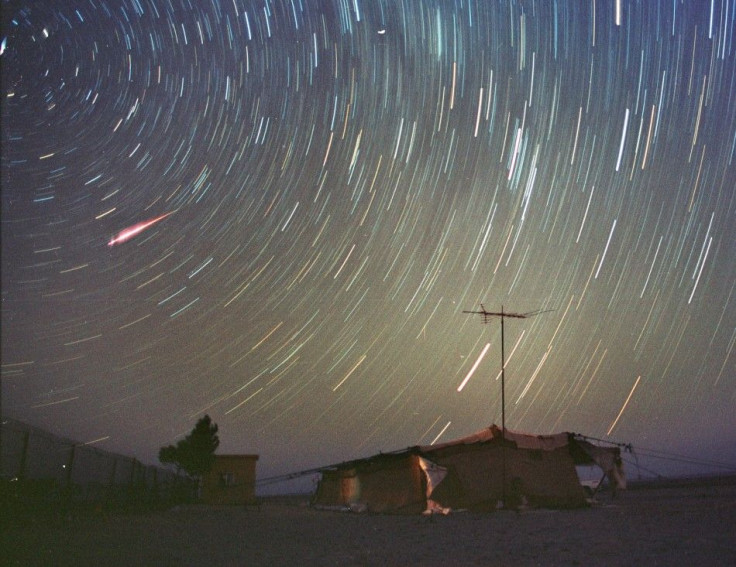Perseid Meteor Shower: When, Where and How to Watch

The annual Perseid meteor shower is round the corner, but conditions are sub-optimal this year: sky gazers will not be able to watch meteors falling through night sky in abundance as the celestial display is predicted to be hampered by the full moon.
The annual Perseid meteor shower is caused by debris from Comet Swift-Tuttle and observed for about 2000 years, and usually an avid sky watcher would be able to see more than one meteor every minute during the night of August 12-13.
There are other meteor showers as well, mainly the Geminids during mid-December and Quadrantids during January, but Perseids is the best meteor shower of the year. But this year, with the full moon washing out all but the brightest meteors, one could probably watch only about 20-30 per hour at most.
However, observers can maximize their experience, scientists say. The best hours for meteor-watching are between midnight and dawn and it is best if one watches with naked eyes, not using binoculars. Again, it will do good to steer clear of city lights when looking for a pedestal to watch from. Also,look for a patch of sky that's free of clouds.
"It is always best to seek out dark country skies when going meteor watching. Any meteor shower includes both bright and faint meteors, but there are generally far more faint meteors than bright ones, so moonlight or light pollution will drastically cut down the number of meteors you will see," says space.com.
During Thursday night, the best times to view meteor shower are from 3:29 a.m. to 3:56 a.m. in Boston, and 4:02 a.m. to 4:32 a.m. in Washington D.C. on Thursday, according to by Space.com.
The shower peaks on the night of Friday-Saturday at 2.a.m. when more than 100 meteors per hour could light up the sky.
"The Perseids are always an exciting meteor shower to watch out for. Even in large cities it's often possible to catch site of some of the brighter Perseid meteors streaking across the sky, but from a really dark site you can sometimes see dozens per hour," says Dr Marek Kukula, public astronomer at the Greenwich Royal Observatory in London.
Some Facts
The Perseid meteor shower happens at a particular time every year when Earth travels through a stream of debris stretching along the orbit of the comet Swift-Tuttle. Comet Swift-Tuttle orbits the sun once every 133 years. The Earth passes through a cloud of the comet's debris each year in August. The huge comet swings through the inner solar system and leaves behind a trail of dust and gravel. These bits of ice and dust -- most over 1,000 years old -- burn up in the Earth's atmosphere.
Perseid meteors enter Earth's atmosphere at about roughly 133,200 mph, and most of them are the size of sand grains, according to space.com. Some are as big as peas or marbles, and almost none hits the ground.
When a Perseid particle enters the atmosphere, it compresses the air in front of it and heats it up. The meteor, in turn, can be heated to more than 3,000 degrees Fahrenheit. The intense heat vaporizes most meteors, creating what we call shooting stars, according to space.com.
The Perseids rate in the southern hemisphere is quite a bit lower, since the Perseid radiant doesn't climb above the horizon, NASA said in a statement. The name derives in part from the word Perseides, a term found in Greek mythology referring to the sons of Perseus.
This year, the full moon will disappoint Perseid watchers. The full moon falls on August 13 and is also called 'Grain Moon' or 'Green Corn Moon'. At the full moon, the moon rises about the same time the sun sets and it sets at about the same time the sun rises. This will create difficulty in viewing the Perseid meteor shower.
In the UK, the National Trust has said locations around Stonehenge in Wiltshire and Mam Tor in the Peak District, high above Sheffield, are ideal for watching meteor shower.
© Copyright IBTimes 2024. All rights reserved.





















